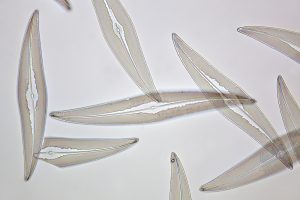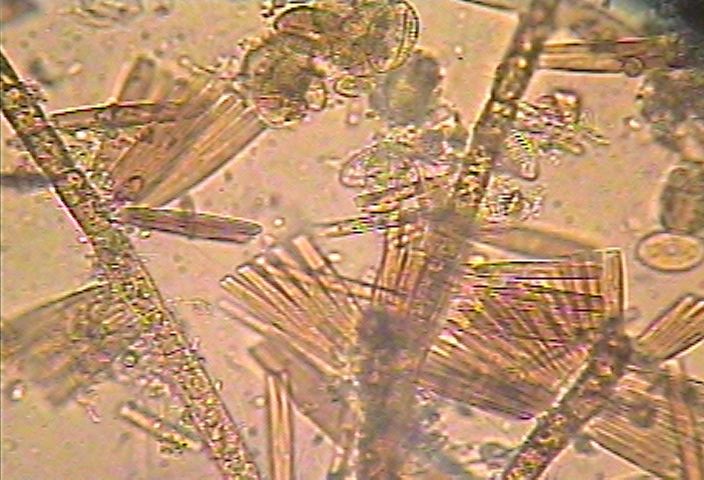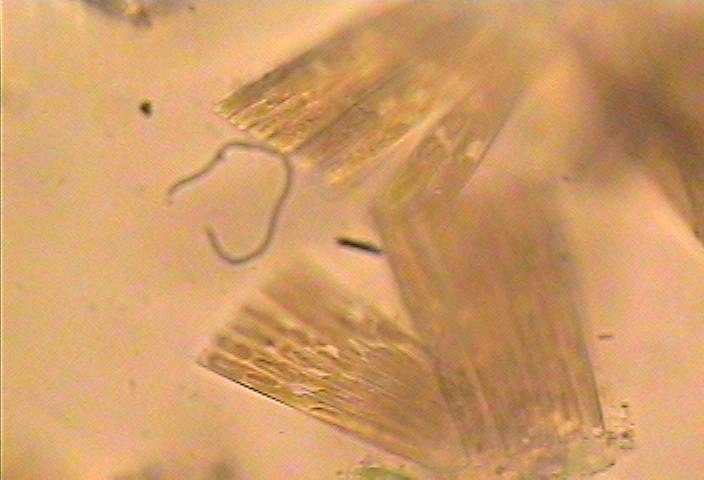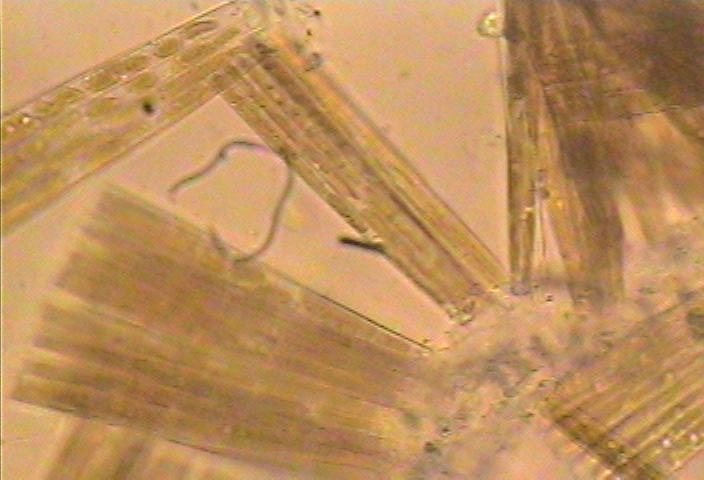Domain Eukarya
Kingdom Chromista
Subkingdom Chromobiota
Infrakingdom Heterokonta
Phylum Bacillariophyta
Class Bacillariophyceae
Subclass Bacillariophycidae
Order Biddulphiales
Family Bidduulphiaceae
Genus Biddulphia
Species sp. ?
Common Name: Diatom
Other members of the Phylum Bacillariophyta
and Image File |
 The Race Rocks taxonomy is a collaborative venture originally started with the Biology and Environmental Systems students of Lester Pearson College UWC. It now also has contributions added by Faculty, Staff, Volunteers and Observers on the remote control webcams. The Race Rocks taxonomy is a collaborative venture originally started with the Biology and Environmental Systems students of Lester Pearson College UWC. It now also has contributions added by Faculty, Staff, Volunteers and Observers on the remote control webcams.
name –year (PC) |




